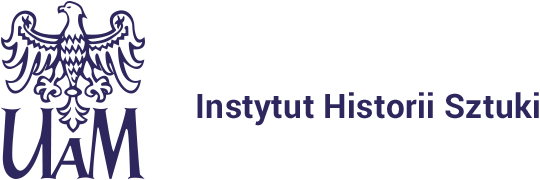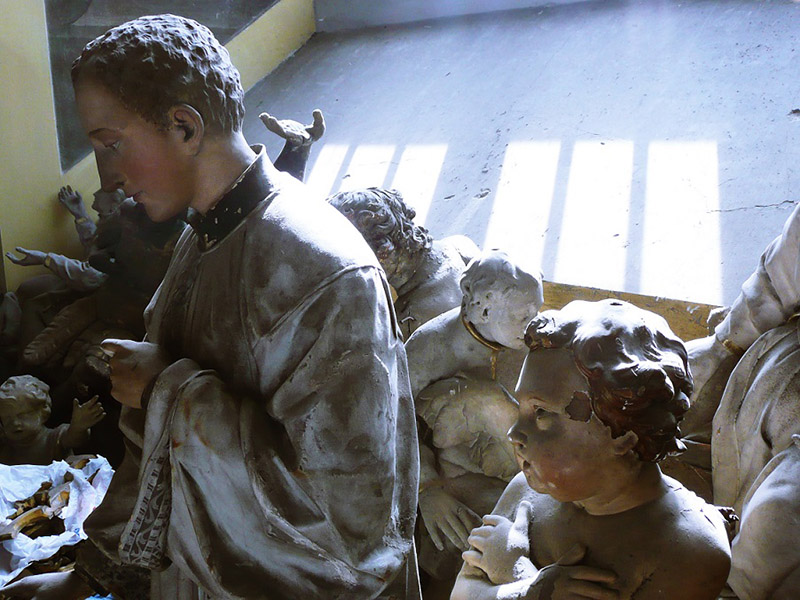For Authors
Artium Quaestiones is peer-reviewed academic yearly published by Department of Art History
Submissions should be made electronically via email (aq.redakcja@amu.edu.pl).
The submission, reviewing and editorial process takes place in the following stages:
Concerns thematic section only – announced in late summer/early autumn Authors interested in publishing in other sections (Varia, Commentaries etc.) can submit their proposals throughout the year. However, they need to account for the fact that we publish once a year at the turn of November and December. |
| 2. Submission of abstracts by prospective Authors. |
|
3. Selection of abstracts by the Editorial Board. Authors of selected abstracts are notified within 2-3 weeks after the deadline about the Editorial Board’s decision and asked to submit a complete text within 2-3 months. |
|
4. Submission of texts by selected Authors. Only texts which meet the deadline specified by the Editorial Board will qualify for the stage of reviews. |
| 5. Review of submitted texts by the Editorial Board.
The editors have the right to reject a submitted text without sending it to external reviewers if they decide the text does not come up to scholarly standards of the journal. |
|
6. Double blind peer review evaluation process. Anonymized articles are sent to reviewers who are normally given between 2-4 weeks for writing the review. Reviewers can accept, reject a text or accept it on the condition of introducing changes they indicate as necessary. |
| 7. Returning reviewed texts and reviews to Authors (if necessary). |
| 8. Correction of texts by Authors (if necessary). |
| 9. Final acceptance of texts for publication (by reviewers and the editors). The decision about the final acceptance for print is usually made in spring.
The Authors of texts qualified for publication are obliged to sign a publishing agreement provided by the Editors. |
|
10. Editorial process. Authors need to comply with editorial standards and cooperate with proof-readers and editors. Their texts are returned for correction twice: after first correction and at proof stage. Authors can expect their texts to be published towards the end of each calendar year (November-December) |
All materials – a text in Word format and illustrations should be sent by email to dr Filip Lipiński, aq.redakcja@amu.edu.pl.
I. General information
Submission materials checklist:
a. main text of the article (max. 40000 characters, incl. spaces) in Word format (doc./docx.), including footnotes in a format given below. In justified cases, with the consent of Editorial Board, texts can be somewhat longer.
b. list of illustrations
c. high-resolution illustrations (min. 300 dpi) in .tif or .jpg format
d. summary of the text, between 2000-3000 characters incl. spaces and 6 keywords
e. short academic bio (max. 800 characters incl. spaces) containing at the end information about academic affiliation with the postal address of the institution.
W publish text in the following languages: Polish, English and German. If a given language is not an Author’s native language, the Author is obliged to have it proofread by a professional translator or a native-speaker. If a submitted text does not meet standards of linguistic correctness, the editors have the right to reject it.
Below you will find guidelines for submissions in English. Authors writing in German are kindly asked to use this format as a framework and provide necessary adjustments for German language.
Summaries should be written in English. If the original text is in English, the editors will have the summary translated into Polish due to the fact that the country of the publication is Poland.
Please title all the files in the following format, including a full or partial name of the Author and a document type:
e. g.: Smith_text.doc, Smith_ill.list.doc, Smith_summary.doc; etc.
II. Detailed instructions concerning text and illustrations
1. Text
Text should not be longer than 40000 characters including spaces and footnotes (excluding illustration captions). In justified cases Authors can exceed the indicated length of an article by 10%. Text should be written in 12 point Times New Roman font, with 1.5 space.
Please write your name and surname at the top of the first page, above the title of the article.
At the end of the process Authors are obliged to sign Author’s statement (regulating use and copyrights of their publication) and licensing contract for electronic publication in PRESSto Open Access Internet platform managed by Adam Mickiewicz University Press.
2. Illustrations
The number of illustrations should not exceed 10. The illustrations should be high-resolution, at least 300 dpi. It a specific layout of illustrations is important (illustrations arranged next to each other , etc.) the Author should clearly indicate his/her preferences. However, final decision about the layout of reproduced illustrations is up to the editors.
The Author of an article is responsible to acquire all the necessary permissions concerning copyrights for hard and electronic publication.
Illustrations should be clearly numbered and required places in the text where they should appear should be marked in the following way: (ill. 1).
Illustration captions should be concise and written in the following format:
Author, title/name, date, medium, provenance / collection, copyright credits/ photograph credits (if applicable)
Examples:
Richard Diebenkorn, Ocean Park No. 16, 1968, oil and charcoal on canvas, Milwaukee Art Museum, © Diebenkorn Estate Foundation
A. Gursky, Ren II, 1999, c-print, VG-BILD-KUNST, Bonn, courtesy of the artist
3. Footnotes
Authors are expected to provide the articles with a format of footnotes required by the editors. Please be consistent. If the Author does not comply with the following editorial guidelines, editors have the right not to accept the submission.
a. books
– one author’s book:
M. Fried, Courbet’s Realism, Chicago-London 1990.
– collected volume
Photography in Nineteenth-Century America, ed. M.A. Sandweiss, Fort Worth 1991.
The Critical Image: Essays on Contemporary Photography, ed. C. Squiers, Seattle 1990.
b. articles in journals and book chapters
– a chapter in a collected volume
A. Trachtenberg, “Photography: The Emergence of a Keyword”, in: Photography in Nineteenth-Century America, ed. M.A. Sandweiss, Fort Worth 1991, p. 30.
– journal articles:
R. Krauss, “Reinventing the Medium”, October 1999, 25(2), pp. 289-305.
Please not that the year of a journal publication is followed by volume and number in brackets (if applicable).
If you need to refer generally to a publication without giving specific pages, use: (See:).
3. Electronic sources:
V. Burgin, The Separateness of Things, „Tate Papers Online”, Spring 2005, available online: <http://www.tate.org.uk/research/publications/tate-papers/03/the-separateness-of-things-victor-burgin> [accessed: 13 September 2016].
4. Subsequent quotations
If you quote a source again use:
a. ibidem (or eadem for female Authors) followed by a page number after a coma, if you refer to the same source in an immediately following footnote
Ibidem, p. 456.
b. if you return to the already quoted source, you repeat the name (no first name initial) and the title (if long, a part of it) followed by an ellipsis (do not use op. cit.).
Fried, Courbet’s Realism…, p. 33.

